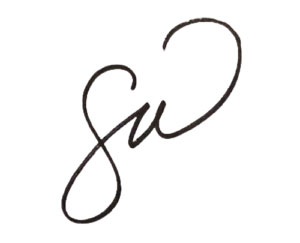I have a bone to pick. Who is the clueless individual who coined the phrase “get your body back after baby?” Surely it was a man. Probably a man working in marketing. Maybe he didn’t have a wife or girlfriend, and maybe he never witnessed a woman push a small human out of her ladyparts. Maybe then it would be easier to reduce the postpartum journey to a one-dimensional destination defined by the numbers on the scale.
Given my 13-year career in the fitness industry, it may come as a surprise I dislike this phrase so much. Perhaps when I was a young, childless Pilates instructor working in New York I bought into the notion a woman’s only concern after childbirth was how to lose the baby weight. But then I had two children of my own, and experienced my body getting bigger and smaller, bigger and smaller, as if I drank a Wonderland potion. But unlike Alice’s story, a lot of other things about my body changed too. My hair fell out. My emotions went rogue. My proportions changed. My pelvic floor became a little more like a sidewalk grate and less like an actual floor. My vision worsened, my skin dried out, and my face widened. My perspective broadened and my priorities sharpened. My dreams came into focus. Shit, my entire identity changed. Suddenly the idea that my primary goal should be to get my body “back” to where it used to be not only seemed insulting, but laughable. Even . . . undesirable.
Bodies tell stories.
They are the canvasses we carry with us for a lifetime, displaying new quirks every time we experience a massive event or reinforce a habit. Each time I work with private Pilates clients, I am reminded of this fact. I spend the first few months learning their story, observing their movement patterns and their alignment. I can tell on which hip their children sit. I can tell if they were pregnant, if there were multiple pregnancies, and how they delivered. Their bodies show me if there was an injury, surgery or accident, and if they sit at a desk all day. Their bodies reflect the sports they enjoy and how much stress they face. A trained eye can even see some genetic markers: their heritage, perhaps, or their predisposition to adopt the posture of their parents. All of it is written in the way we stand, move and carry ourselves. Our bodies my change shape, lose or gain weight, but our stories remain written in our structure and movement patterns.
And then there is the stuff the eye can’t see, but still exists in our collective motherhood experience. The miscarriages. The birth trauma. The postpartum depression. The lack of sleep. The exhilaration of maternal love. The shift in priorities and the change in relationships. The expansive empathy and reduced tolerance for bullshit. The identity overhaul.These stories live within us, too. After all, childbirth is not just a physical event. It is a profound moment when we not only give birth to a child, but to a new version of ourselves.
Whether you are carrying around the last 20 pounds of baby weight or you lost all of it and then some, your body is still different that it was before children.
There is no such thing as “getting your body back.”
And let me be clear: your post-baby body should be revered.
THIS body was a vessel.
THIS body gave sacred passage.
THIS body provides warmth and love and safety when the world is too much to bear.
THIS body should be celebrated – treated with care, compassion and respect.
Our postpartum goal should be to nurture the body that nurtures so many others. The journey through the 4th trimester should include taking care of our bodies, our minds, and our sense of self. Eating right and exercising is part of that, but for the sake of increasing our energy and our endorphins, not because we must erase the signs of childbirth. When we live fully-present in our current journey, instead of wishing to return to a time (or a body) that is no longer available, we open the door to possibility. By taking care of ourselves, we maintain our power to take care of others. With possibility and power, we thrive.
And when mama thrives, the family thrives.
This post was originally published on The Broadview Denver.
Saralyn Ward is an award-winning writer, wellness advocate, and mountain mama. She is the founder of The Mama Sagas, writes for several publications and hosts a regular parenting TV segment on Colorado's Everyday Show. When she's not huddled over edits, you're likely to find Saralyn climbing peaks or skiing down them, and reminding herself that the two little girls that call her mom are not the boss of her.



